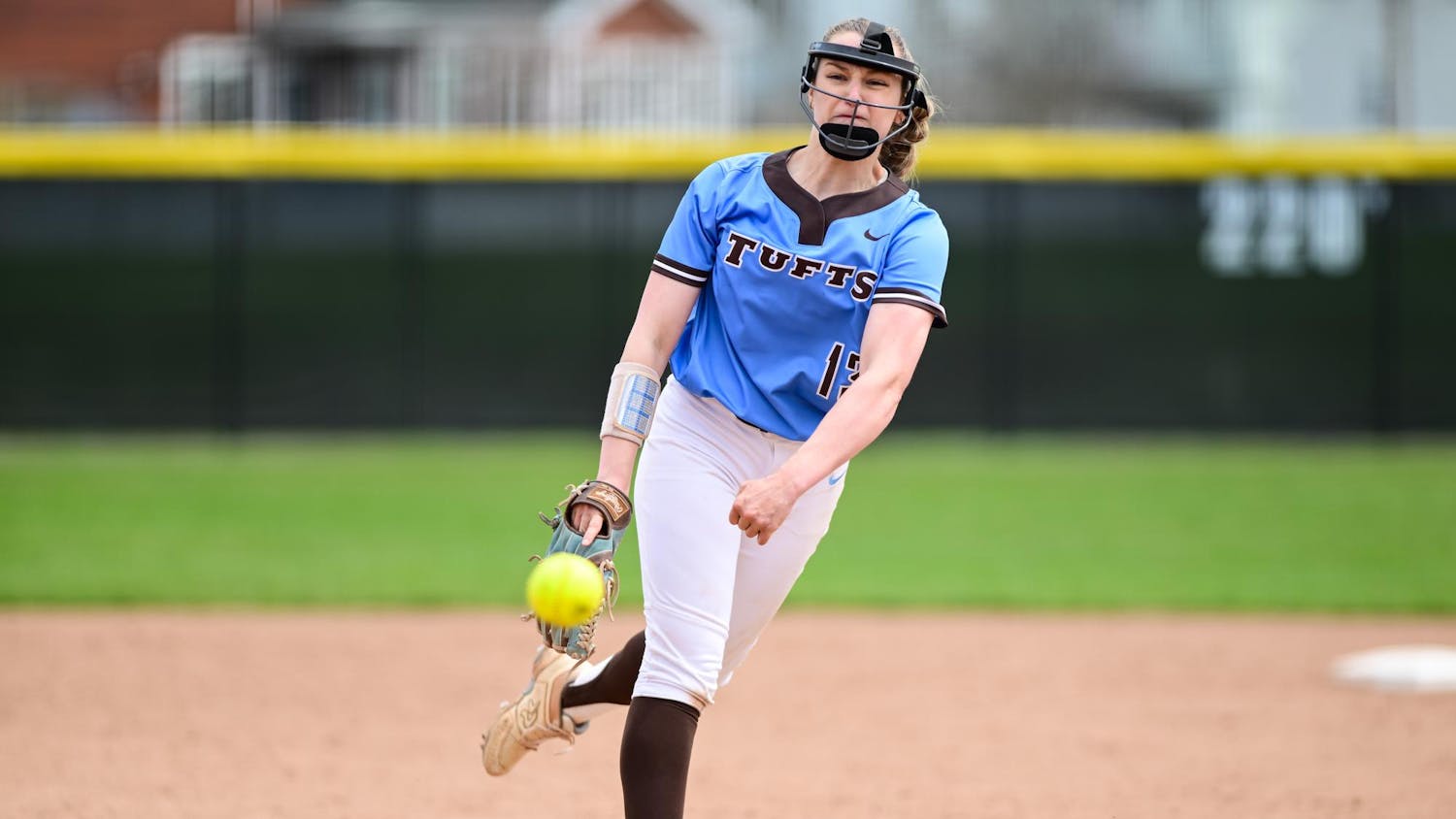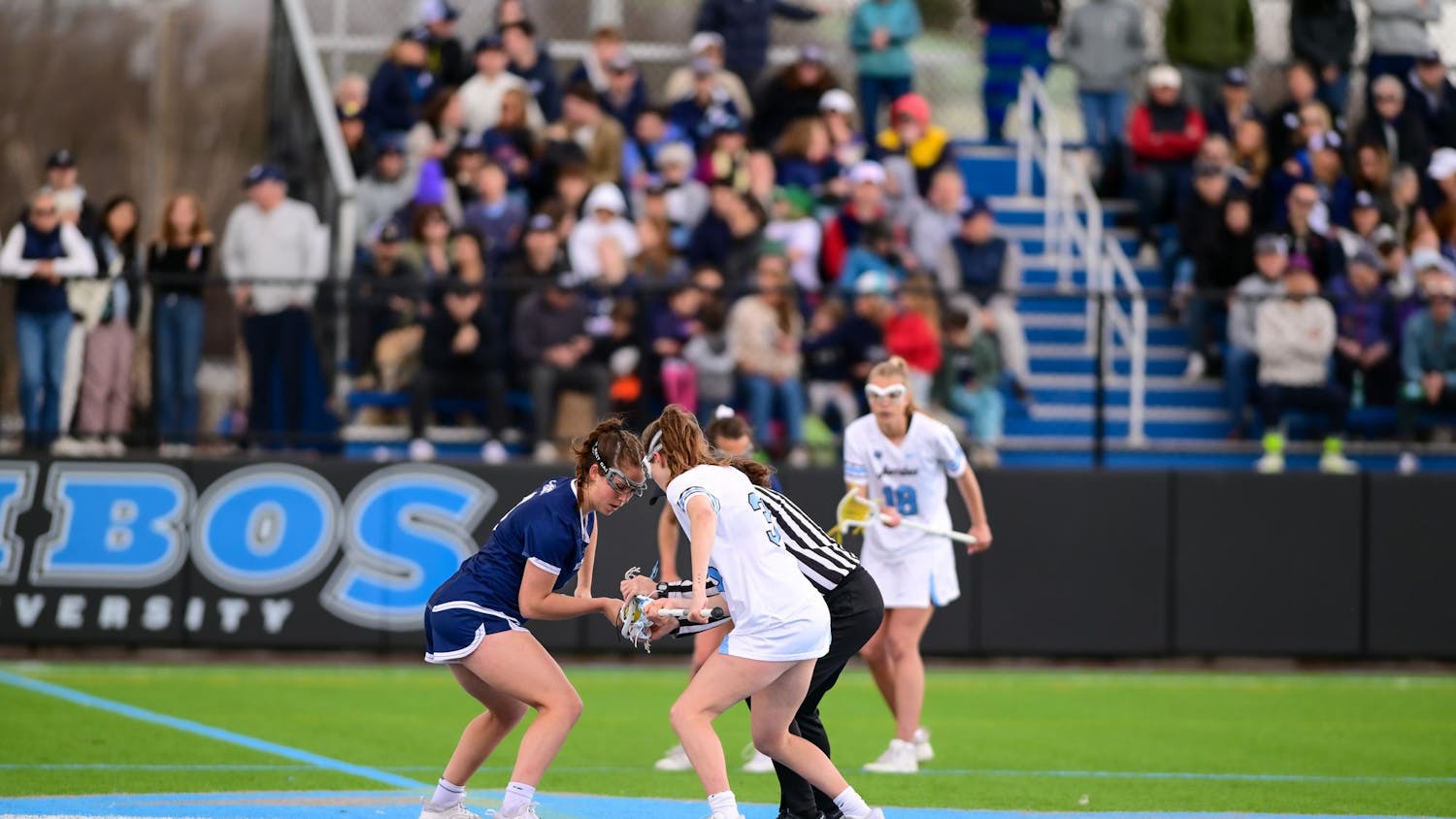Though the 2015-16 athletic year may have lacked the excitement of a national championship win, Tufts quietly had one of the best years in the history of its athletics programs last year. The Jumbos finally broke into the top five in the Learfield Sports Directors’ Cup Div. III standings, which were announced on June 9, finishing fourth in the best showing in school history.
The Learfield Sports Directors’ Cup, a joint project by the National Association of Collegiate Directors of Athletics (NACDA) and USA Today, has been the best metric to compare the overall strength of collegiate athletic programs since it was first developed in the mid 1990s.
Each institution is awarded points based on the finishes of its athletic teams in NCAA competition, with national championship-winning teams earning 100 points for their school, runner-ups earning 90, and so on. Up to 18 different teams — nine women’s and nine men’s — can score for their school in a given year.
In all, more than 400 institutions compete in NCAA Div. III athletics, and 324 scored points in the Learfield rankings.
“What makes the result meaningful is not the place finish itself, but rather what it represents,” Tufts Director of Athletics John Morris told the Daily in an email. “To finish fourth out of more than 400 Div. III institutions, that means a large number of [Tufts] teams are winning or competing for NESCAC championships and making deep runs into NCAA tournaments – it’s that breadth of competitive success, and the amazing championship experiences it affords our student-athletes, that I find most gratifying.”
Over the course of the 2015-2016 year, 15 Jumbo teams earned NCAA berths and racked up 882.25 total points, trailing only Williams (1098.25), Washington University in St. Louis (1013) and Emory (969). Unsurprisingly, Williams earned the top spot in the standings again for the 19th time in the 21 years since the Learfield Cup was expanded to include NCAA Div. III schools in 1995-96.
In a testament to the strength of the competition that Tufts teams regularly face, NESCAC schools dominated the top 15. Williams and Tufts joined Middlebury, which came in fifth with 860.50 points, Amherst, which placed seventh with 796.50 points, and Bowdoin, which finished 15th with 616.50 points.
Though Tufts has made the top 10 in eight out of the last 10 years, prior to this past year, it had only placed as high as sixth, which it did during the 2005-2006 and 2009-2010 seasons. The men’s lacrosse team’s national championship win in May 2010 — the school’s first ever NCAA title — roughly marked the start of a surge that has seen the Jumbos rise to become national contenders in an increasing number of sports.
Since then, Tufts teams have earned another seven NCAA championship titles, including two more in men’s lacrosse (2014, 2015), three straight in softball (2013-2015), one in field hockey (2012) and one in men’s soccer (2014).
Despite the three national championships earned by men’s soccer, men’s lacrosse and softball in 2014-15, Tufts finished in ninth place in the Learfield standings with 766.25 points. Ironically, no Tufts teams earned NCAA titles last year, but more widespread success across a greater number of sports lifted the point total higher: 15 teams’ NCAA scores factored into the Tufts total as opposed to just 11 in 2014-15.
Though no teams won national titles, class of 2016 graduate Mitchell Black of the men’s track and field team won individual national championships in the indoor 800-meter race in the winter and in the outdoor 800-meter in the spring, becoming one of the most decorated Jumbo athletes in the history of Tufts athletics. They were his third and fourth overall NCAA titles after he won both events in 2015.
The women’s cross country team shined in the fall, placing seventh at the NCAA Championships in one of the program’s strongest seasons ever and picking up 72 of Tufts’ 193 fall points. Men’s cross country also improved from 2014 to 17th place at NCAAs, while men’s soccer, despite being unable to match their 2014 underdog run to a title, rounded out the fall scoring by making it to the third round of the NCAA tournament.
Though its performance did not factor into Tufts’ Learfield Cup score, the football team was nevertheless the most visible success story of the fall as it continued to turn its reputation around after a dismal, winless 2010-13 stretch, finishing in third place in the NESCAC with a 6-2 season in 2015.
The excitement heated up more tangibly toward the end of the winter season, though, as the men’s and women’s basketball teams simultaneously made their deepest runs through the NCAA tournament in program history. While the men thrilled Tufts fans at Cousens Gym all the way through their run, which ultimately ended with a tough loss to NESCAC rival Amherst in the Elite Eight, the women battled on the road all the way to the NCAA championship game. Though they lost to defending national champion Thomas More College, the team's runner-up finish is tied for the second best performance among all Tufts teams of the year.
The winter was the highest-scoring season for Tufts, yielding 357 points in total, as men’s and women’s swimming and diving, men’s and women’s indoor track and field and basketball all had some of their strongest NCAA showings in recent years. Standing out in particular was men’s swimming and diving, which placed 12th in its best season since 2006.
The Jumbos saw that streak continue into the spring season, which has traditionally seen significant success for the school due to the sheer dominance of men’s lacrosse and softball — both have spent the majority of the past two years ranked No. 1 in the nation in Div. III.
Even in a season in which softball faltered at regionals and men’s lacrosse lost in the NCAA Championships game for the first time (their runner-up finish still tied women’s basketball for the best individual team performance), there were still strong NCAA performances from women’s tennis, baseball and men’s and women’s outdoor track and field that bolstered the total spring score and allowed Tufts to edge out NESCAC rival Middlebury for the fourth spot.
Men’s track and field turned in a best-ever 15th-place finish at the NCAA meet, while both baseball and women’s tennis qualified for their respective regional finals.
Despite how well Tufts finished in this year’s Learfield Cup standings, metrics like this serve more as trophies for athletic directors like Morris to tout than they do as goals for athletes. According to senior field hockey co-captain Nicole Arata, the Directors’ Cup standings aren’t really a talking point in the locker room or in coaches' pep talks, and many athletes have never even heard of the Cup. Still, Jumbo athletes did not need to know exactly what Tufts' Learfield point tally was to know that the athletics programs as a whole were having one of their best years in school history.
“There was definitely an excited energy in Tufts athletics last year,” Arata said. “I maybe would have thought that we did better the year before, with men’s lax and softball and men’s soccer all winning national championships. But I could also see that more teams made a mark this [past] year.”
Though the Learfield Cup may mean more to those in the athletic administration office than to the average Jumbo athlete, as Arata notes, it is important for Tufts to have widespread success across a variety of sports — that kind of self-propagating culture of success can inspire stronger performances within the athletics community.
“There is definitely [an athletic] program-wide pride,” Arata said. “I would say that Tufts athletes definitely enjoy the successes of other Tufts athletes. There is a level of intensity in the weight room, a community in the training room and in athlete social spheres that takes pride in athletic achievements — like breaking records in the weight room, winning games and cheering each other on. And I would say that spirit has definitely grown in the four years I've been at Tufts.”
Tufts athletics appears to be in strong shape, which is a welcome sign for Morris as he enters his second year as athletic director. But while Morris admits he wants to see more teams win NESCAC championships during his tenure, and see Tufts continue to stay in the top 10 in the Learfield Cup and improve upon its fourth-place ranking, the competitive success that many teams now enjoy allows for more holistic goals for Tufts' athletic programs.
“All of our victories on the field are rendered hollow if we aren’t also winning in the classroom, ensuring our student-athletes get involved in campus life and community service, and using athletics as a vehicle to build leaders, bring the campus community together and enhance school pride,” Morris said. “My goal is to continue building a championship culture around those values, and if we do that, our performance in the Directors’ Cup will take care of itself.”
More from The Tufts Daily





